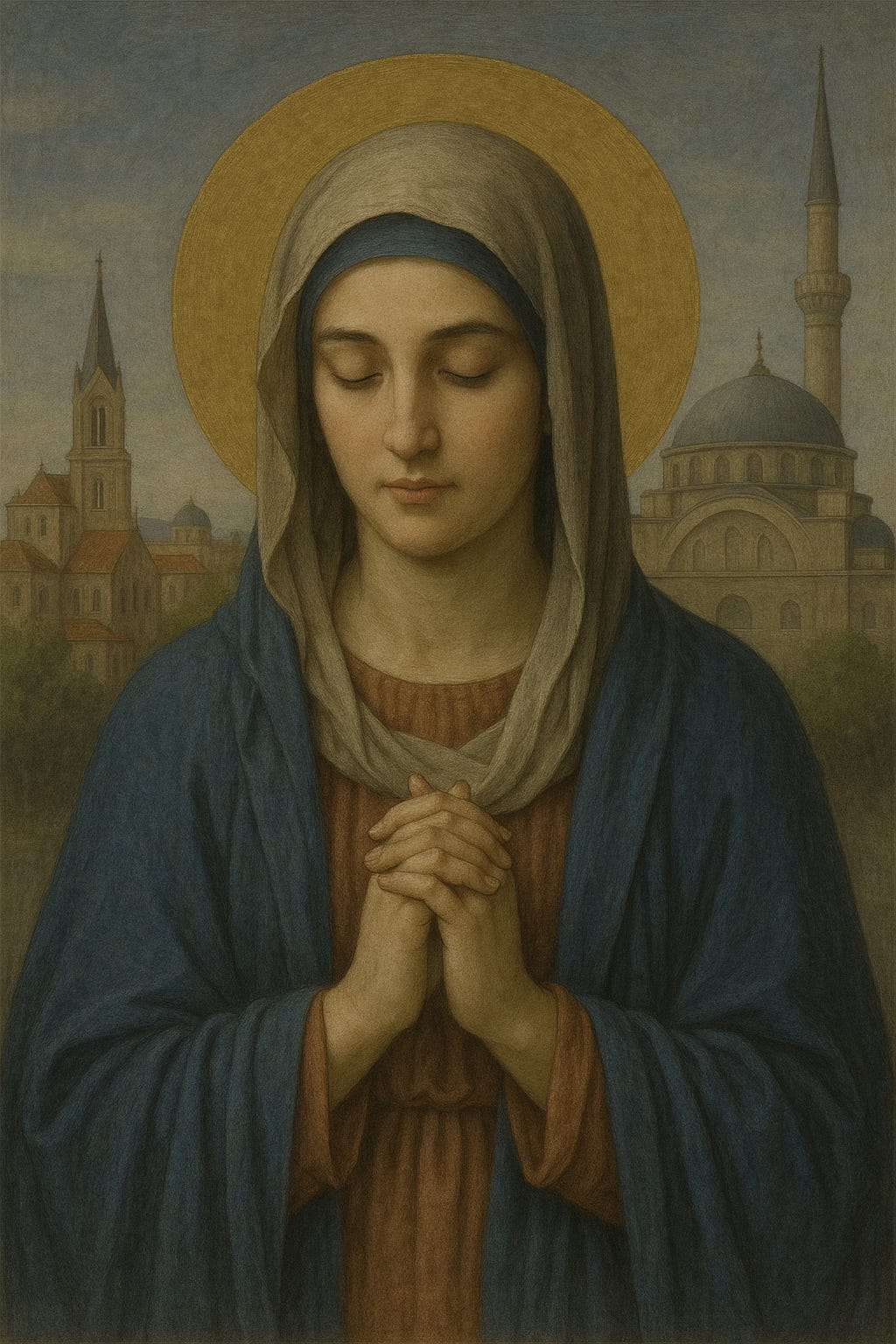Lady Mary (SA): A Bridge Between Faiths
How the Quran, Persian culture, and shared reverence for Maryam (SA) create common ground between Muslims and Christians.
Few figures in history carry as much love and reverence across religions as Lady Mary (SA). In Islam and Christianity alike, she is cherished as a model of purity, faith, and unwavering devotion to God. For Muslims, she is Maryam bint ʿImrān, the chosen servant of Allah, honoured with an entire chapter of the Quran bearing her name. For Christians, she is the mother of Prophet Jesus (SA), a figure of holiness and sacrifice.
In an age when divisions often dominate headlines, Lady Mary (SA) offers something profoundly different: a bridge that connects communities, cultures, and hearts.
Mary (SA) in the Quran
The Quran describes Lady Mary (SA) with words of deep honour:
“O Mary, God has chosen you, purified you, and chosen you above the women of all the worlds”
(Quran, Surah al-e-Imran, Chapter 3, The Family of Imran, Verse 42).
Her story is one of devotion, prayer, and complete surrender to the Divine. She receives heavenly provision, is protected under the care of Prophet Zakariya (SA), and is chosen to bear Prophet Jesus (SA) through a miraculous birth that defies worldly norms.
For Muslims, she is counted among the greatest women of all time — mentioned in hadith alongside Lady Fatimah al-Zahra (SA), Lady Khadijah (SA), and Lady Asiya, the wife of Pharaoh. Each represents a shining model of faith, but Maryam’s (SA) purity and spiritual strength stand uniquely tall in both Islamic and Christian tradition.
Maryam (SA) in Persian Literature and Culture
In Persian culture, Maryam (SA) is more than a figure from scripture; she is woven into poetry, art, and everyday life. Poets like Rumi and ʿAttar invoke her name as a symbol of the soul prepared for divine grace. The phrase “be like Mary” carries layers of meaning: innocence, spiritual receptivity, and readiness to host God’s light.
Even today, Maryam is among the most cherished names for girls in Iran, a reflection of how deeply her character is admired. She is often mentioned in the same breath as Lady Fatimah (SA), together forming the highest examples of womanhood in Islamic tradition.
Mary in Art and Folk Traditions
Walk through Iran’s historic cities, and you’ll find Lady Mary’s (SA) presence not only in mosques and Qur’anic commentary, but also in Christian churches, tile work, and even Persian miniatures. In Isfahan’s Vank Cathedral or the Church of Saint Mary in Urmia, Muslims and Christians alike pause to honour her memory.
In local traditions, her name is invoked in prayers for healing, in vows made during hardship, and in songs that celebrate her role as a mother and servant of God. This cultural reverence shows how she transcends religious labels — her sanctity belongs to humanity as a whole.
A Shared Bridge of Faith
What makes Lady Mary (SA) so powerful as a bridge is not just that two great religions honour her, but that they do so with striking similarity. Muslims and Christians alike see her as pure, faithful, and devoted to God’s will. She represents humility before the Divine, the miracle of life, and the strength of a woman chosen by God to carry a prophetic mission.
In a world struggling with division, her story reminds us that true faith is not about walls but about shared light. To speak of Mary (SA) is to find common ground — a reminder that God’s mercy is wider than our differences.
Conclusion
Lady Mary (SA) stands as a timeless figure who connects Muslims and Christians in love, respect, and devotion. Her presence in the Quran, her echoes in Persian poetry, and her reverence in art and folk culture all point to one truth: she is a bridge that God Himself built between communities.
By turning to her story, believers of different faiths can find inspiration not only in her chastity and devotion but also in the unity she represents. In her, the walls fall away, and only the light of God remains.


